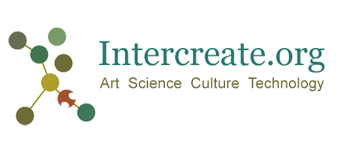WAI by Te Hunga Wai Tapu

Image credit: Detlev van Ravensway Science Photo Library
Te Hunga Wai Tapu roughly translates as the group of people for whom water is sacred. They are: Ian Clothier, Dr Te Huirangi Waikerepuru, Te Urutahi Waikerepuru, Jo Tito, Craig Macdonald, Julian Priest, Tom Greenbaum, Sharmila Samant, Leon Cmielewski, Josephine Starrs, Andrew Hornblow, Darren Robert Terama Ward, Johnson Dennison, Andrew Thomas, Gordon Bronitsky. Aerial imagery courtesy of Land Information New Zealand.
This group consists of people from Aotearoa New Zealand, the United States of America, Australia and India. A global community representing many cultures, including the indigenous.
The works presented consist of aspects of traditional Māori knowledge; five videos shown through two data projectors; a Pou Hihiri (which reflects the womb of the universe that holds unrealized potential ); and traditional Māori and Navajo/Dine audio generated live by data sensors in New Zealand.
Contributors and roles
Ian Clothier is the curator for the project and is project manager.
Wai rests on Mātauranga Māori provided by Dr Te Huirangi Waikerepuru. Mātauranga Māori refers to traditional knowledge, pre-colonisation in Aotearoa New Zealand, which means before 1840. At the SCANZ 2011:Eco sapiens hui-symposium, Dr Waikerepuru spoke about Wai as central to Maori world view. Wai connects air, atmosphere, mountains, rivers, beaches and humans via breath.
Te Urutahi Waikerepuru has contributed strategy, networking and core creative activity – the Pou Hihiri was created under her direction. Craig Macdonald made the Pou Hihiri graphics which involved interpretation of traditional stars and concepts into contemporary form and materials. Julian Priest and Tom Greenbaum created the custom electronics LED control system.
Jo Tito is a Maori artist who exhibits internationally. Her contribution is a video concerning Maori notions of Wai.
Sink was created by Julian Priest and is a model of anthropogenic ocean acidification which is based on a scientific view of the interaction of humans and natural systems: a shell acidifies on exposure to greenhouse gases. Priest is well know for his work in open source, open networks and creative projects.
Sharmila Samant is a well known contemporary artist from India. She recently traveled to Taranaki in New Zealand to make a work for the exhibition Sub Tropical Heat: New Art from South Asia. Given her interest in water issues in India, she created a video work in which Te Huirangi spoke about water while standing on the banks of the Waiwakaiho river.
Sydney based Leon Cmielewski and Josephine Starrs are collaborators on an animated video and highly regarded for the work with text and landscape. Their video for features the words of Te Huirangi digitally etched into Taranaki maunga (Mount Taranaki_. Cmielewski and Starrs are fr0m Australia and met Te Huirangi Waikerepuru at the SCANZ 2011 Eco sapiens hui-symposium.
In Aotearoa New Zealand in the small Taranaki town of Opunake are situated three data sensors. The sensors are custom made by Andrew Hornblow. Data from the sensors runs to the project website, where each data reading is correlated to an audio file of either traditional Maori sounds or traditional Navajo sounds. This system was made by Julian Priest and Adrian Soundy for The Park Speaks. Julian Priest also provides server support.
Darren Robert Terama Ward is a contemporary Maori artist who also makes his own traditional musical instruments. He is contributing the traditional Maori audio. Andrew Thomas is a Navajo/Dine musician and is contributing the Navajo sounds, played on traditional instruments.
Johnson Dennison is Navajo/Dine Medicine Man and will contribute to the dawn opening ceremony led by Dr Te Huirangi Waikerepuru. Te Huirangi Waikerepuru considers it important to contact, respect and collaborate with local indigenous people.
Gordon Bronitsky is a cultural producer and has assisted us by providing connection points to local indigenous peoples and advice of a cultural nature.










